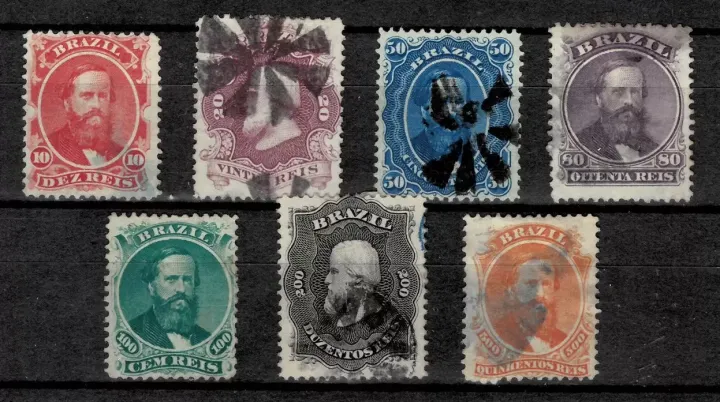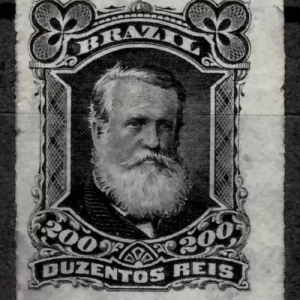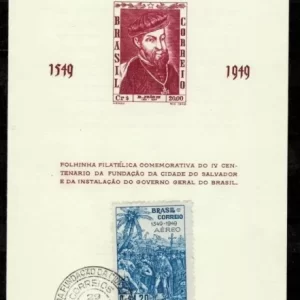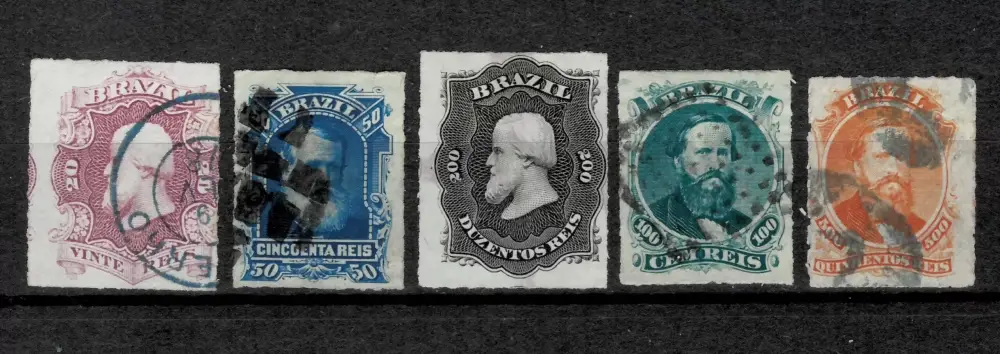In 1876, Brazil was still an empire under the reign of Pedro II, the last monarch of Brazil. Let’s explore what we know about Brazilian postage stamps from that year:
- Historical Context:
- In 1876, Brazil was the Empire of Brazil, a vast country that had gained independence from Portugal in 1822.
- It was a time of significant change: the slave trade had been abolished in 1850, though slavery itself wouldn’t be fully abolished until 1888.
- The economy was largely agrarian, with coffee being a major export.
- Brazilian Stamps of 1876:
- During this period, Brazilian stamps typically featured the portrait of Emperor Pedro II, who was a patron of the arts and sciences.
- The stamps of 1876 are part of what philatelists call the “Dom Pedro” series, which began in 1866.
- These stamps were recess-printed (intaglio), a high-quality printing method that creates a slightly raised surface.
- Design Elements:
- Central Portrait: Likely a profile or facing portrait of Dom Pedro II.
- Frame: Ornate frames were common, often with intricate scrollwork or national symbols.
- Inscriptions: Probably “IMPERIO DO BRASIL” (Empire of Brazil) and the denomination in “REIS” (the currency at the time; 1000 reis = 1 mil-réis).
- Color: Colors might include shades of blue, green, red, or brown, depending on the denomination.
- Denominations and Uses:
- Common values might include 10 reis, 20 reis, 50 reis, 100 reis, and higher.
- Different values were used for different weights of letters or types of mail (local, national, international).
- Production and Printing:
- Stamps were likely printed by the National Printing Office in Rio de Janeiro.
- Watermarks or security features might have been used to prevent counterfeiting.
- Postal System:
- In 1876, Brazil’s postal system was expanding, especially with the growth of railways.
- However, given Brazil’s vast size and varied terrain, mail delivery could still be challenging in remote areas.
- Philatelic Significance:
- Stamps from this era are prized by collectors, especially well-preserved or rare varieties.
- They offer insights into Brazil’s imperial history, artistry, and the development of its postal services.








Reviews
There are no reviews yet.